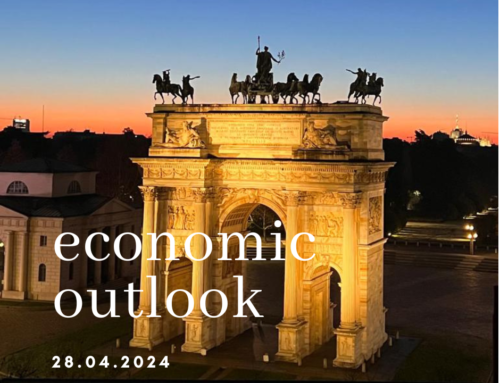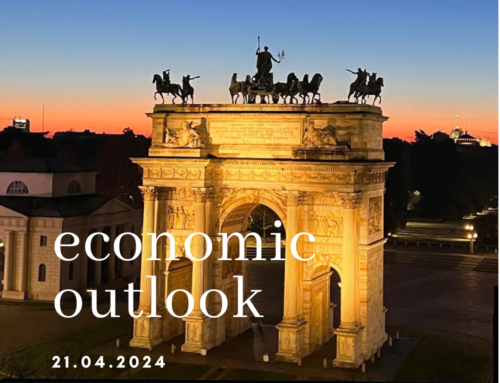| USA The ISM non-manufacturing PMI fell to its lowest level since December 2022 but managed to keep a toe in expansion territory (from 51.9 to 50.3). Growth in business activity decelerated (from 52.0 to 51.5) while new orders lost momentum (from 56.1 to 52.9). New export orders, for their part, recorded a small decrease, falling 1.9 points to 59.0 after surging 17 points the previous month. Amid this decreased demand, the orders backlog contracted at a faster pace (from 49.7 to 40.9), as did supplier delivery times (from 48.6 to 47.7). On the other hand, the employment sub-index slipped into contraction territory (from 50.8 to 49.2). All this translated into a decline in the prices-paid sub-index, which nonetheless remained in expansion territory (from 59.6 to 56.2, a multi-month low) The trade deficit widened from $60.6 billion in March to $74.6 billion in April. The goods trade deficit, for its part, grew from $81.6 billion to $96.1 billion. The expansion was due to the fact that exports declined 5.3% (to $167.1 billion) while imports rose 2.0% (to $263.2 billion) in the month. On the exports side, the main contributors to the decrease were industrial supplies/materials (-$6.1 billion) and consumer goods (-$1.7 billion). On the imports side, the charge was led by three segments: automotive (+$2.0 billion), industrial supplies (+$1.9 billion), and consumer goods (+$1.8 billion). Country by country, the U.S. goods deficit narrowed with Canada (from $6.6 billion to $6.1 billion) but widened with China (from $22.6 billion to $24.2 billion) and the European Union (from $15.6 billion to $17.3 billion). The services surplus, meanwhile, grew mildly wider to $21.6 billion as exports rose slightly (+0.2%) while imports edged down (-0.6%) Continuing with signs for some potential softening in the labor market, initial jobless claims surged higher in the week ending on June 3rd, rising by 28,000 – much more than anticipated. This lifted initial claims to 261,000 – the highest level in 20 months. While the increase is substantial, no much should be read much into this. The weekly data can be noisy, and the week included the Memorial Day holiday, which may have also injected some volatility. Secondly, looking at seasonally unadjusted figures, the increase lacked breadth across states, as it was concentrated in Ohio, California, and Minnesota The Wall Street Journal reports that US banking regulators are preparing to force large banks to increase their capital buffers by as much as 20%. Such an action would reduce banks’ profitability and further tighten credit conditions The administration of US President Joe Biden is looking to cushion the blow to student loan borrowers when repayment of those loans resumes at the end of August after a more than three-year moratorium. The administration is looking to put in place a three-month transition period in which borrowers who miss payments won’t be marked delinquent, Politico reported Stocks closed modestly higher in a week of relatively subdued trading ahead of the Federal Reserve’s policy meeting and rate announcement on the following Wednesday. The week was notable for the S&P 500 Index moving into bull market territory, or up more than 20% off its mid-October lows. It was also notable for broadening market gains, with small-caps outperforming large-caps, and value shares outperforming growth stocks. An equally weighted S&P 500 Index also rose more than its capitalization-weighted counterpart for the first time in eight weeks and by the largest margin since late March In terms of data release, all eyes will be on the Federal Reserve’s monetary policy meeting at which FOMC members are expected to keep policy rates unchanged for the first time since January 2022. Having increased their key interest rate by 500 basis points over the last 15 months, policymakers believe that they have afforded themselves time to wait and assess the impact of higher rates on the economy and inflation. Importantly, the decision will come alongside an updated Summary of Economic Projections, which could show an improved near-term outlook for GDP growth and the jobless rate. A fresh dot plot will also be published which could signal plans to tighten policy further this year and hold rates at a higher level through 2024 and beyond. As always, the decision will be followed by a press conference where the focus will surely be if the Fed plans to tighten policy further The publication of May’s CPI report will also attract a lot of attention. The energy component may have had a negative impact on the headline index as prices likely fell in both the gasoline and natural gas segments. Expected gains for shelter could still result in a 0.2% monthly increase in headline prices. If correct, the YoY rate should come down from 4.9% to a 2-year low of 4.1%. The core index, meanwhile, could have advanced 0.3% on a monthly basis, something which would translate into a 5.1% annual gain The release of industrial production data for May is also out next week. Manufacturing output could have cooled in April judging by other indicators of factory activity, but this decline may have been partially offset by higher production in the utilities segment. All told, total industrial production could have advanced 0.1%. UK The UK’s two largest mortgage lenders, Halifax and Nationwide Building Society, reported that house prices fell significantly in April, a sign that the market recovery may be faltering. Even so, the Royal Institution of Chartered Surveyors said its May housing market survey showed the main measures for house prices, new inquiries, and sales agreements improved month over month but remained in negative territory Once one of the world’s key energy sources, Britain’s North Sea oil and gas output is poised for a further slump after shrinking by two thirds in the past 20 years, leaving the country increasingly dependent on imports. A windfall tax introduced last year as energy prices soared prompted oil and gas producers including some of the UK North Sea’s biggest Total Energies (TTEF.PA) and Harbour (HBR.L) to cut investment in the basin. While the government moved on Friday to waive the levy – which hiked taxes on oil and gas producers to an overall rate of 75% – should prices fall far enough, industry sources doubted it would succeed in its stated aim of boosting energy security by encouraging investment. “This is a step in the right direction, but many more will need to be taken to restore confidence to our sector,” said David Whitehouse, chief of the UK’s offshore oil, gas and renewables business association OEUK Sterling ticked higher on Thursday on expectations for more interest rate hikes by the Bank of England (BoE) after a forecast showed UK inflation is set to remain elevated this year. Britain will have the highest inflation of any leading economy in 2023 at 6.9%, forecasts from the Organization for Economic Co-operation and Development (OECD) released on Wednesday showed. Sterling rose 0.35% to $1.2482 and was set for its second consecutive weekly rise. Against a strengthening euro, it was flat at 86.06 pence and stood not too far from a six-month high hit against the single currency last week. Shaun Osborne, chief FX strategist at Scotiabank in Toronto, said data from OECD was somehow supporting the sterling. “Sticky prices are impacted by high imported items costs. That’s not a good look for the pound but it should also be no surprise that markets are still pricing close to another 100 basis points of BoE tightening over the coming months to combat price gains,” he added. Sterling also got a boost after Canada’s central bank surprised markets on Wednesday by hiking its overnight rate to a 22-year high of 4.75%. EU European Central Bank (ECB) officials signaled that borrowing costs are likely to rise again in June, although there appeared to be less unanimity on implementing rate increases in subsequent months. ECB President Christine Lagarde and Bundesbank chief Joachim Nagel reiterated their hawkish stance for more rate increases, pointing out that there were few signs of easing in underlying price pressures. However, Dutch central bank Governor Klaas Knot appeared to have joined the less hawkish policymakers. While acknowledging that rates would still have to rise, Knot dropped his previous insistence on increases in June and July. He said rate decisions must be taken step by step as there was more evidence that tighter monetary policy was working Revised data showed that the eurozone economy shrank by 0.1% sequentially in both the first quarter of this year and the final three months of 2022, meeting the technical definition of a recession. Meanwhile, flat eurozone retail sales in April indicated that consumption remained weak. Germany’s industrial sector also continued to deteriorate. Factory orders unexpectedly fell 0.4% compared with March, while industrial output grew 0.3% sequentially—less than the 0.5% uptick expected by economists polled by FactSet In local currency terms, the pan-European STOXX Europe 600 Index ended 0.46% lower amid caution ahead of central bank meetings in Europe and the U.S. Major stock indexes were mixed. Germany’s DAX eased 0.63% and France’s CAC 40 Index fell 0.79%, while Italy’s FTSE MIB gained 0.35%. CHINA The private Caixin/S&P Global survey of services activity rose to 57.1 in May, up from April’s 56.4, its fifth successive monthly expansion since Beijing lifted pandemic restrictions in December. The Caixin survey of manufacturing activity, released the prior week, also unexpectedly rose to 50.9 in May. The bullish Caixin data countered the official manufacturing Purchasing Managers’ Index (PMI), which contracted in May for a second consecutive month. Index readings above 50 indicate growth from the previous month Expectations that China will need to boost economic stimulus grew this week after weak export and import data illustrated that demand remains subpar both domestically and internationally. Exports fell 7.5% year over year in May, a much worse performance than forecast, while imports fell 4.5% compared with a year ago. The Wall Street Journal reported that in April China’s share of US goods imports fell to their lowest levels since 2006. Analysts fear that exports could fall further as they still remain elevated compared with pre-COVID levels. Expectations are building for easier monetary policy from the People’s Bank of China as well as policy support, such as easing regulatory burdens and increasing subsidies. China has recently allowed the yuan to weaken, boosting the competitiveness of exports and easing financial conditions Chinese equities were mixed after the latest inflation data increased concerns about the country’s faltering post-pandemic recovery. The Shanghai Stock Exchange Index rose 0.04% while the blue-chip CSI 300 declined 0.65% in local currency terms. In Hong Kong, the benchmark Hang Seng Index gained 2.32%, extending the previous week’s gains. |
| Sources: T. Rowe Price, MFS Investments, TD Economics, Reuters, National Bank of Canada, M. Cassar Derjavets |


